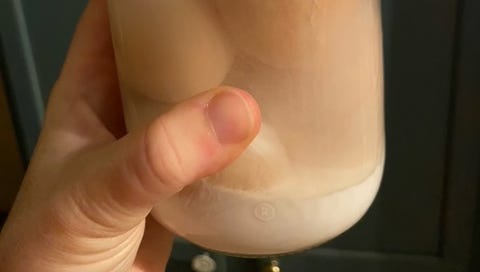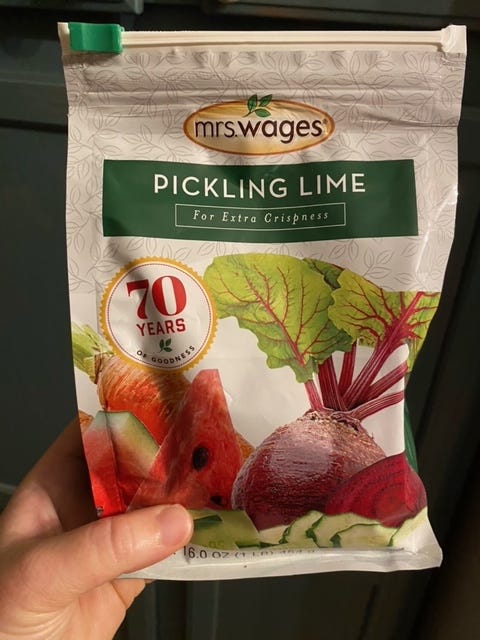Did my egg water glassing experiment work? Yes!
Water glassing involves preserving fresh, unwashed eggs in pickling lime. Our eggs stayed fresh after 4 months.
Some of the links in this post are affiliate links. I make a small commission from purchases made through these links, at no cost to you. I share products that I know and use. As an Amazon Associate I earn from qualifying purchases.
Over the past few years, I’ve tried several ways of preserving eggs. I’ve cracked and “scrambled” the raw eggs, added them to BPA-free storage containers, and froze them. Later I’ve thawed and used the eggs in baking. I’ve taken that same “scramble” method and dehydrated eggs, storing them in the pantry for years. To reconstitute, I’ve added warm water at a 1:1 ratio, let it sit for 15 minutes, and then used in baking. I’ve also cooked scrambled eggs and frozen them, but haven’t been a fan of their texture once they’re thawed and reheated. One of my favorite ways of “storing” eggs is making quiches and freezing them. They always seem to thaw and reheat well. I’ve also tried storing fresh eggs in wood ash in the basement. None of those batches were successful, and ended up wasting dozens of eggs. This year I tried water glassing eggs for the first time.
How do you water glass eggs?
You can find blogs and videos ad nauseum on the process, so I won’t go into the specific steps. On a basic level, you mix (paid link) pickling lime and water in a glass vessel, then add clean and unwashed eggs—ideally as fresh as possible. I used a quart-sized, wide-mouth glass jar and I was able to fit 7 eggs in it. In advance of adding the eggs to the lime solution, I added hard-boiled eggs to the jar to see how many would fit. Then I filled the jar with water and removed the eggs to see how much water I would need to add to the jar without the eggs displacing it and causing an overflow. Essentially, a quart-size jar can be filled halfway with water, then you can add the lime and mix it well. Then add about 7 fresh eggs.
Using eggs in abundance
During the peak of summer laying, our flock of about a dozen layers provides us 6-to-8 eggs daily. (Some girls are older than others and don’t lay as often.) That means our family of two has more than 3 dozen eggs coming in each week. When the eggs are in abundance our dog gets one on top of each meal. Since our pigs arrived over the summer, they enjoyed eggs in their meals when we had extra. I also plan our meals around eggs during the summer. In the fall and winter, breakfasts turn more to bagels, pancakes, waffles, or oatmeal, which require fewer or no eggs at all. Quiche falls off the meal plan too.
Although I’ve had great success with dehydrating eggs and they take up very little space in the pantry, prepping them and layering them in the dehydrator is time-intensive, usually at a time when the yard and animals are more time-intensive too. I’m thrilled this water glass experiment worked because I’ll not only be able to preserve more eggs in less time, but they will store longer. My experiment was just 4 months, but water glass preservation is known to preserve eggs for one year or more.
Choosing eggs for water glassing
When I bring eggs in from the coop, I immediately separate them by cleanliness. The cleanest eggs move to a basket on the counter and become the first-choice eggs for whatever I cook next. Dirty eggs move to a separate container and I’ll either wash those and use them for hard-boiling, or wash them and crack them over our dog’s meals. Water glassing requires the freshest eggs, so I specifically waited for a batch of clean eggs from the girls and I water glassed them the same day they were laid. A few may have even been laid within the hour of water glassing.
Water glass egg plans
Now that I know this method works for us, I’ll start water glassing eggs next year as soon as the girls hit their laying stride. We’re adding new layers to the flock this winter, so we’ll have a steady flow from the new girls by summer. I don’t have many wide-mouth quart jars, so I’ll order a case this winter. Twelve jars with 7 eggs each means we’ll have 7 dozen eggs next winter. Already with the shortening days our flock is giving us only one egg per day on average. If we use one jar of eggs per week, that would easily supplement meals until the girls start laying more.
Our other plans include testing for longevity. My experiment was only 4 months, so next year we’ll see how longer storage fares.





